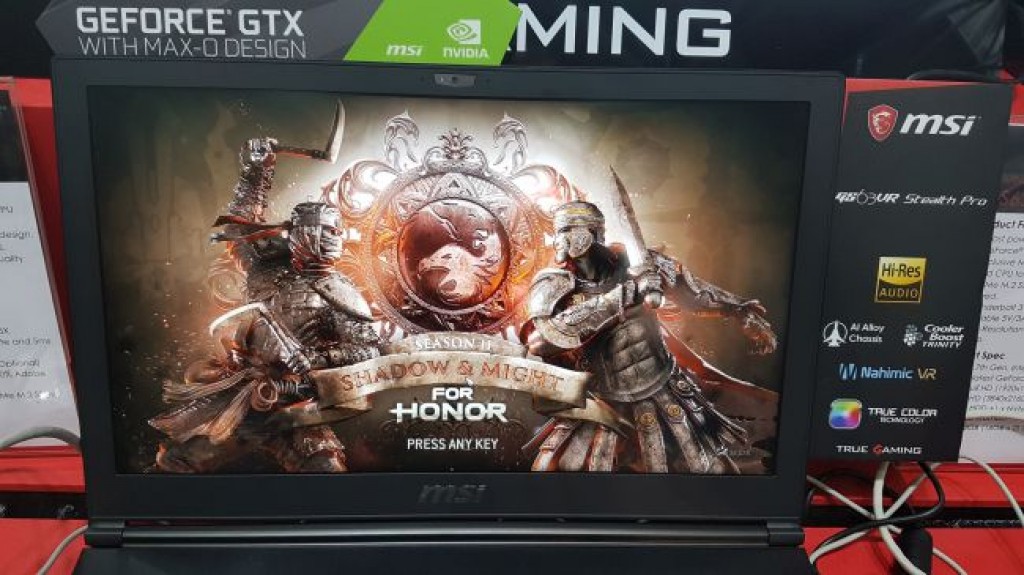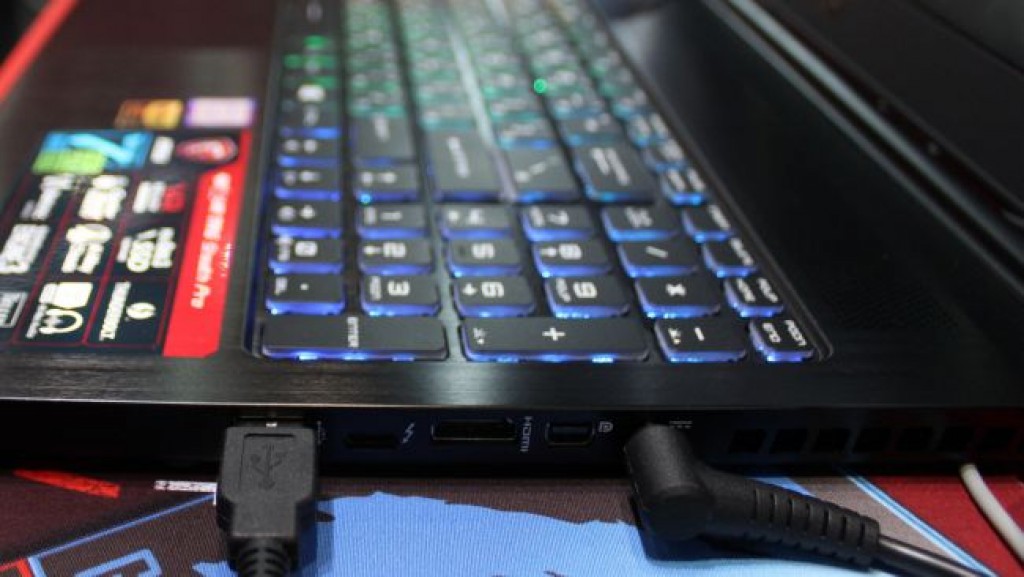
OUR VERDICT
- The 2017 GS63VR has crammed a 40% GPU boost into the same ultra thin 17.7mm chassis, for one of the most dramatic iterative performance boosts we’ll see this year.
FOR
- Huge GPU upgrade
- Optional 120Hz/3ms screen
- Ultra thin 17.7mm chassis
- RGB SteelSeries keyboard
AGAINST
- Thunderbolt 3 doesn’t add much
- Potentially more expensive
- Misses out on dual M.2 SSDs
The GS63VR Stealth pro wasn’t the biggest launch by MSI at Computex 2017, but it does feature one of NVIDIA’s new range of Max-Q GPUs, making this Ultrabook-sized gaming laptop particularly on trend at this year’s show.
Max-Q GPUs have the same pascal chips as their predecessors, but feature a new thermally conscious power regulator that throttles the total power supplied to a GPU so that it performs more efficiently.
It may seem like this is a nice way to spin the fact that the new GPUs will slightly underperform against their Pascal predecessors (which will undoubtedly happen), but the performance drop is actually only around 10%. This reduction allows the mobile GTX 1070, which once required 115W of power, to draw only 80W, and drastically reduces the demand for cooling.
The GS63 VR Stealth Pro is perfectly positioned to take advantage of some of the most significant benefits of NVIDIA’s new architecture. Last year’s GS range featured traditional Pascal GTX 1060 GPUs that drew 80W of power, so the Max-Q 80W GTX 1070 has simply been swapped in this year. This upgrade offers a generous 40% boost in power, without needing to add bulky cooling architecture or increase the overall chassis’ footprint.
In fact with the laptop coming at just 17.7mm thick, it’s hard to fathom how a 6GB GTX 1070 GPU can even fit in the GS63VR.
Backing up this muscle is one of the latest Intel Core i7 CPUs, up to 32GB of RAM in dual 16GB DDR4 slots, one 2.5-inch SSD or HDD connected via SATA 6Gb/s and a M.2 PCIe connected SSDs that can reel in read speeds of a 2200MB/s.
MSI’s biggest contribution to the slim 4.2lb (1.9kg) unit will be a new cooling configuration, and the company made a point of highlighting its new Cooler Boost Trinity technology at the Computex launch. The unit’s three 41-blade Whirlwind fans work alongside five heat pipes to dissipate the considerable heat created by these powerful components.
The cooling system also contains dual thermal modules to compartmentalise the heat from the two processors, with the GTX 1070 getting the lion’s share, with two of the three fans being dedicated to it.
Quick reflexes
The other big kicker is that the GS range can also be kitted out with the optional 120Hz display with the exceptionally fast 3ms response rate that’s a big selling point of MSI’s GE and GT units this year. As long as they aren’t prohibitively expensive, this seems like a much better alternative than defaulting to a pretty standard 15.6-inch Full HD IPS LCD panel.
The range does still also seem to offer the option for a 4K IPS display, if you prefer clarity over latency, and it wouldn’t be a wasted addition, since the additional power of the GTX 1070 GPU would make it more than capable of playing in 4K resolution with reasonably high graphical settings for most titles.

The new Intel CPU gives the laptop access to the CPU manufacturer’s latest Thunderbolt 3 technology, which can deliver 40Gbps data transfer rates, carry 4K display feeds and even has the capacity to carry enough power for charging. This really just complements the existing USB 3.1 Type-C connection, which can already deliver those benefits on current models, but additional versatile connections are rarely a hindrance.

Finally, the GS63 units feature a High Resolution Audio-compatible sound card and a 3.5mm headphone jack to deliver pitch-perfect 24-bit audio, amplifying the immersive gaming experience on both connected high-res headsets and the included speakers.
In addition to the 3.5mm audio jack, the GS63VR also includes an Ethernet port, four USB 3.0 sockets, an SD card reader, a 3.5mm mic input, a mini-display port, a DC power input, a HDMI port and one of the new Thunderbolt 3 connections (instead of last year’s USB 3.1 Type-C connections).
Much like its predecessors, the GS63 is wrapped in a lightweight black metal veneer chassis that has a little flex, but isn’t a repeat of the dangerously bendable cases we’ve seen from earlier GS Stealth Pro units.
The mildly embellished exterior is pretty restrained for MSI, with the only real extravagance being the full-sized RGB backlit SteelSeries keyboard. Although bright, the chiclet membrane keyboard didn’t exceed our expectations in terms of key resistance and travel distance, but the general feel of the trackpad was soft and responsive.
The entire undercarriage of the unit on display at Computex was covered in a felt sticker that prevented us from getting a genuine sense of the case’s thermals, although we’re not sure if this was a final product feature or a display unit peculiarity.
Early verdict
Since we don’t yet have any benchmark scores, the final spec sheet or a price, this is very much an early impression of what the MSI GS63VR Stealth Pro could conceivably become, rather than an in-depth appraisal. But if the real-world benefits turn out to be anything like the massive jump in performance that we expect based on the updated components, this will be an excellent step for the GS Stealth Pro range.
It’s true that this unit does miss out on MSI’s recently launched Per-Key RGB keyboard backlighting system, but if the price hasn’t been drastically increased from last year then the considerable boost in gaming performance is more than enough for us to overlook the omission of such novelties.
Sоurсе: techradar.com









































